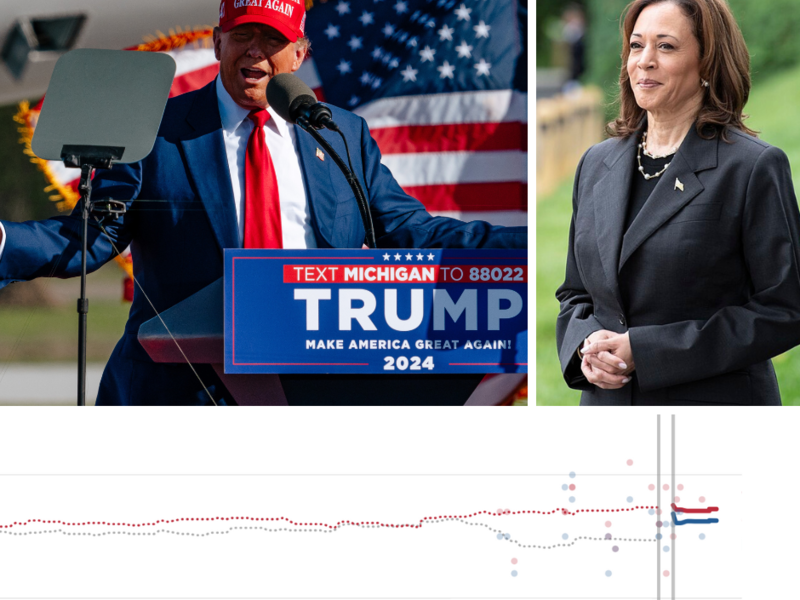About the relaunched 2024 Harris vs. Trump National Polling Average
In today’s polling landscape, it can feel dizzying to make sense of conflicting numbers and differing methodologies various pollsters use.
Response rates to traditional live-interview surveys remain low. Some polls test a two-way matchup, while others include third-party candidates as named options. Should polls taken for campaigns or outside groups — many of whom are invested in getting it right to determine where to allocate their resources, others just out to spin — be taken as seriously as those by unaffiliated media outlets? And are some polling averages “flooded” by new or fly-by-night polling outfits who lack a track record and are less than transparent about their approaches?
Though there aren’t necessarily “right” or “wrong” answers to these questions, The Cook Political Report’s relaunched Harris vs. Trump national polling average tracks the 2024 presidential race via a curated average of national polls conducted by 21 nonpartisan/bipartisan pollsters we consider reputable and transparent.
Response rates to traditional live-interview surveys remain low. Some polls test a two-way matchup, while others include third-party candidates as named options. Should polls taken for campaigns or outside groups — many of whom are invested in getting it right to determine where to allocate their resources, others just out to spin — be taken as seriously as those by unaffiliated media outlets? And are some polling averages “flooded” by new or fly-by-night polling outfits who lack a track record and are less than transparent about their approaches?
Though there aren’t necessarily “right” or “wrong” answers to these questions, The Cook Political Report’s relaunched Harris vs. Trump national polling average tracks the 2024 presidential race via a curated average of national polls conducted by 21 nonpartisan/bipartisan pollsters we consider reputable and transparent.

Methodology:
The tracker will be updated daily at noon and midnight Eastern Time. The Cook Political Report moving average includes 12 more traditional polls that incorporate live interviews (ABC News/Wash Post, CNBC, CNN, FOX News, Grinnell/Selzer, Marquette Law School, NBC News, NPR/PBS/Marist, NYTimes/Siena, Quinnipiac, Suffolk/USA Today and Wall Street Journal) and nine online/large panel polls (ABC News/Ipsos, CBS News, Economist/YouGov, Harvard/Harris, Morning Consult, Pew Research Center, Reuters/Ipsos, SurveyUSA and Yahoo News).
To be included in our national polling average, a poll must:
- Be conducted by one of the 21 polling organizations listed above, and meet basic transparency standards of publishing sample size and survey methodology.
- Be conducted partially or entirely in the past 60 days. Polls are weighted by recency (for example, a poll that came out of the field a day ago counts roughly twice as much as a poll that came out of the field a month ago).
- Only name as options candidates who are likely/certain to be on the ballot in all 50 states. This means that for now, we include two-way matchups between both presumptive nominees but exclude ballot tests that name third-party candidates, such as RFK Jr., Jill Stein, Chase Oliver, or Cornel West.
- Include samples of either registered voters or likely voters. In cases where a pollster publishes results for both universes, we include only the results among likely voters.
- Because online pollsters tend to survey voters more frequently than live-interview pollsters (including some that survey voters on a rolling basis), we only include the single most recent result of each online pollster to prevent one pollster from dominating the average. Multiple surveys conducted by the same live-interview pollster may be included, provided they were all conducted in the last 60 days.
Subscribe Today
Our subscribers have first access to individual race pages for each House, Senate and Governors race, which will include race ratings (each race is rated on a seven-point scale) and a narrative analysis pertaining to that race.